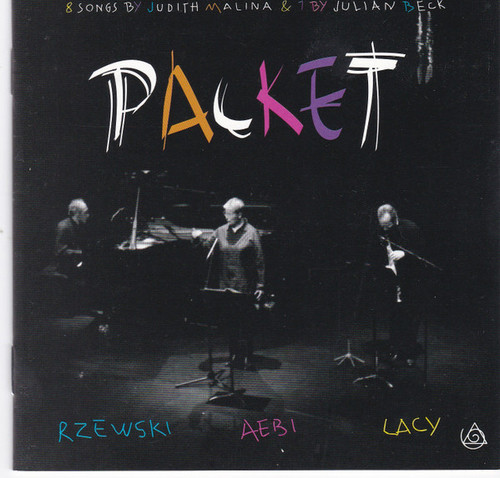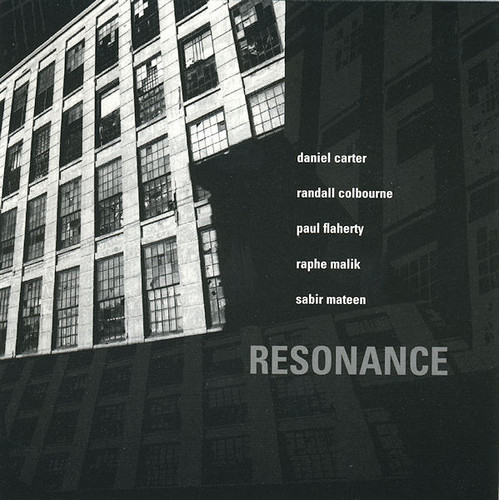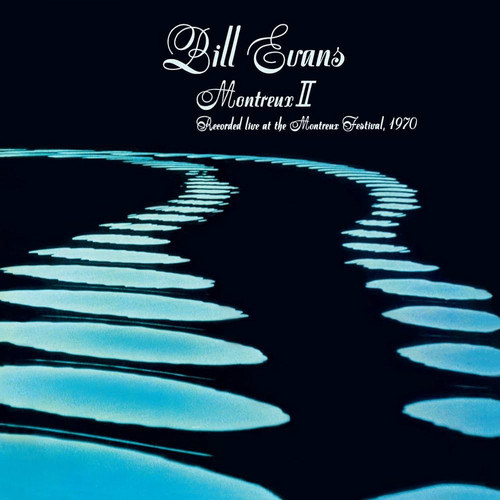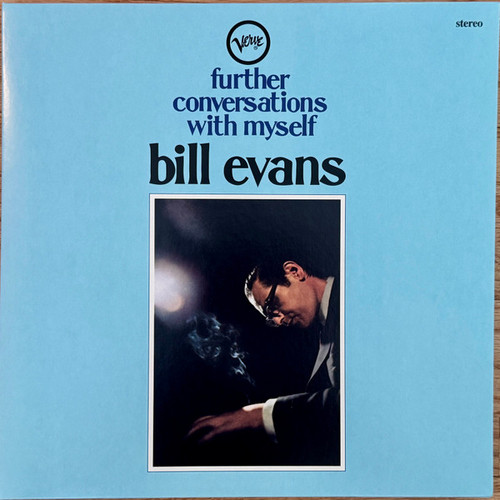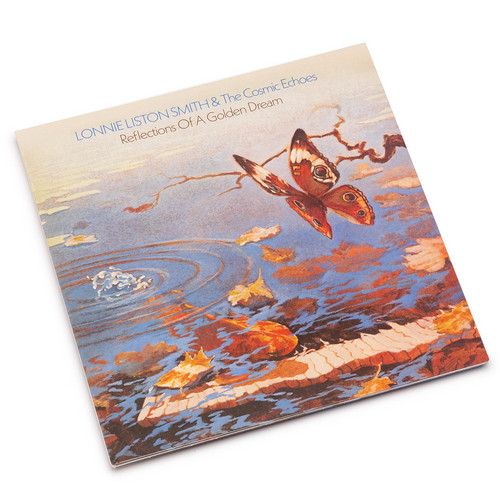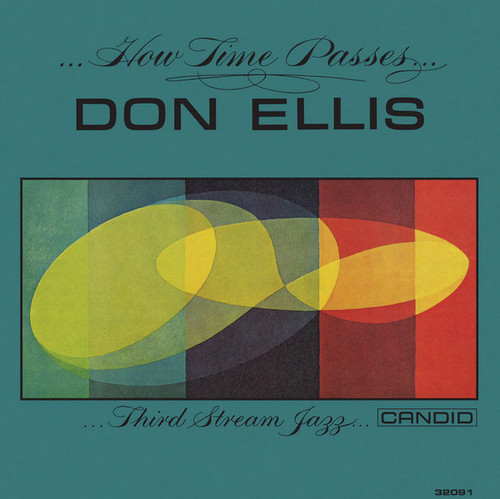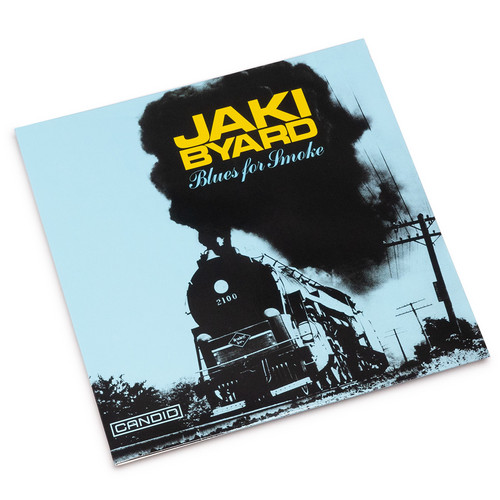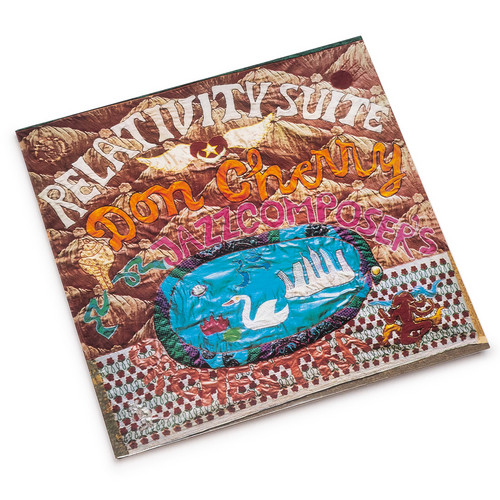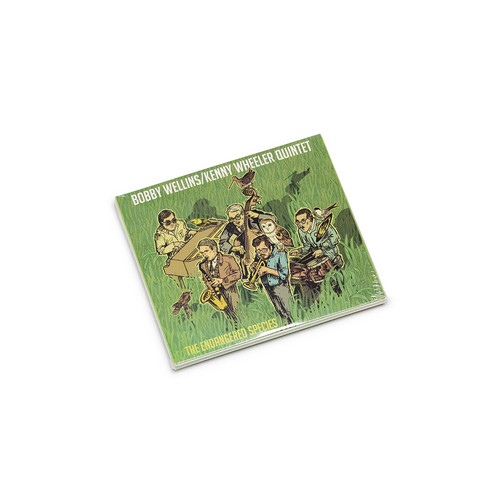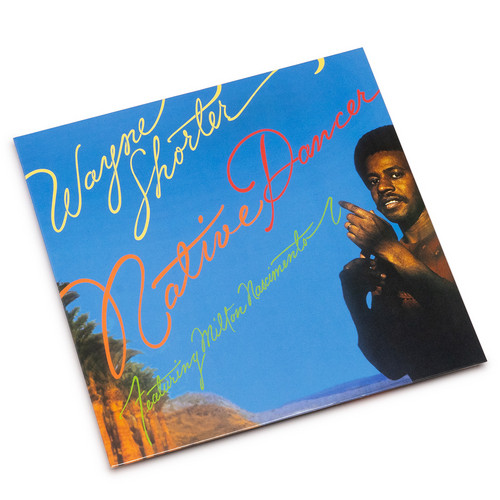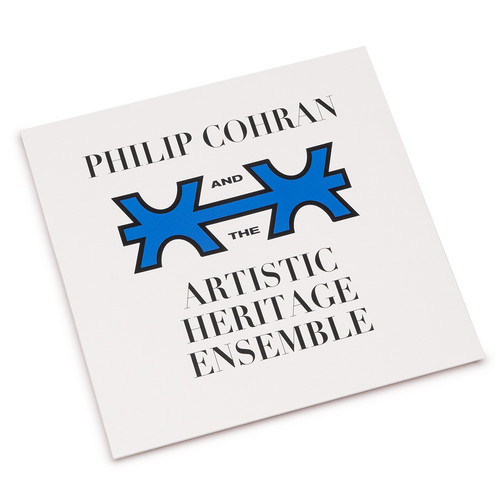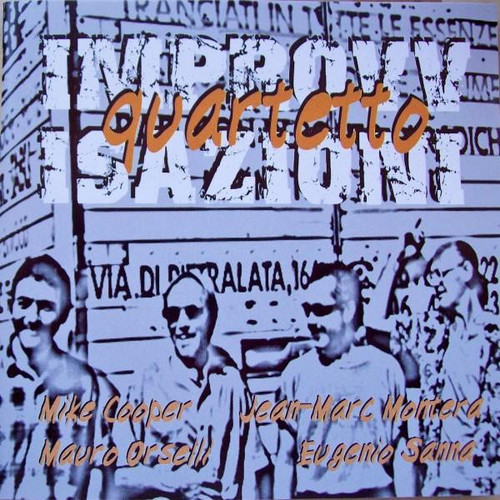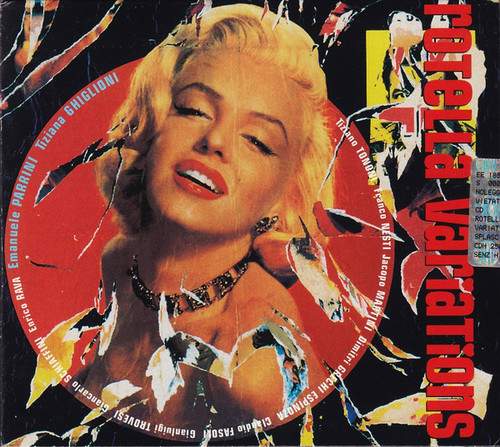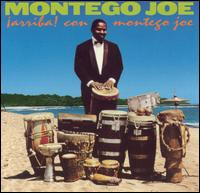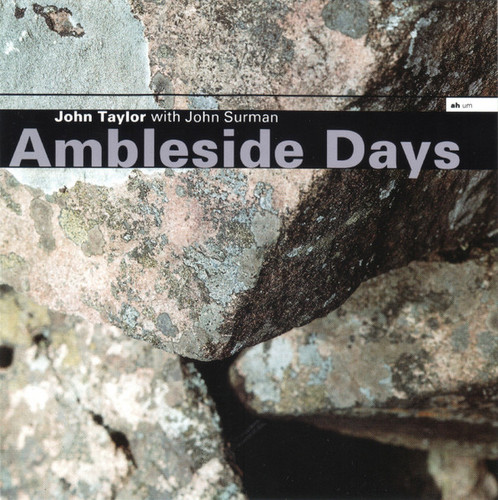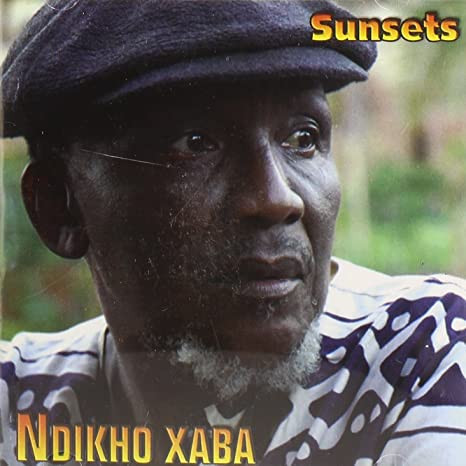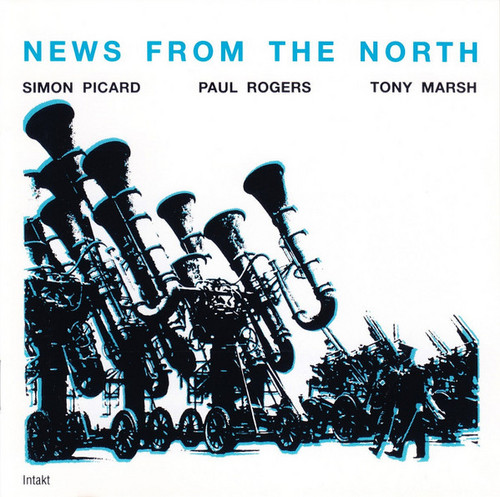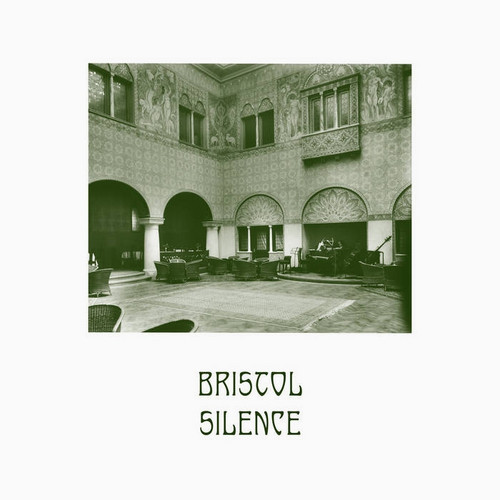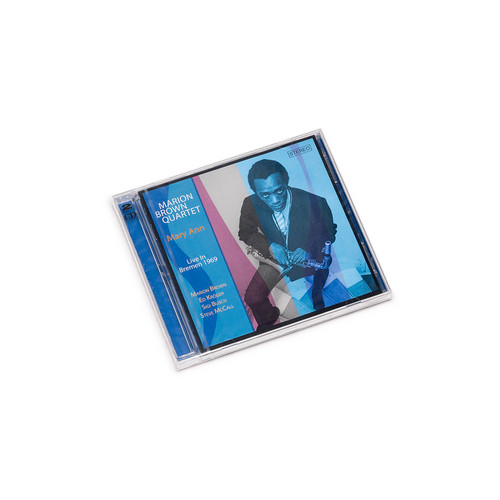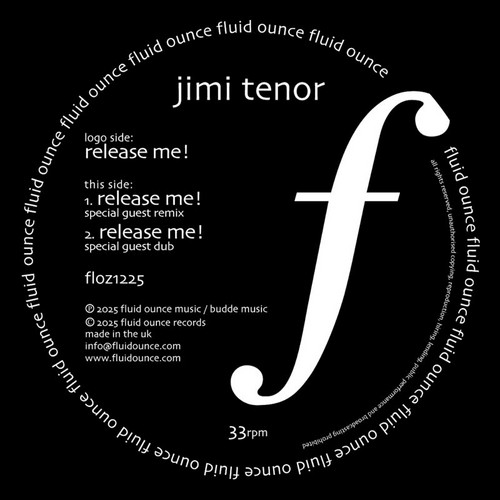Jazz /
Packet
1995 release ** "This work had its origin in the '60s. That's when I met Irene Aebi and Frederic Rzewski in Rome. The three of us have been working together ever since. The Living Theatre (founded by Julian Beck and Judith Malina in New York) was at that time very active in Italy and, as the most powerful and innovative theatre group anywhere, was becoming part of all our lives. I knew them from New York from the late '50s (The Connection, The Brig), and so did Frederic, who had composed and pla…
Resonance
1997 release ** Daniel Carter, alto saxophone, tenor saxophone, flute, clarinet, trumpet, piano, voice - Randall Colbourne, drums, piano - Paul Flaherty, alto saxophone, tenor saxophone, voice - Raphe Malik, trumpet, piano - Sabir Mateen, alto saxophone, tenor saxophone, flute, clarinet, piano, voice.
Montreux II – Recorded Live At The Montreux Festival, 1970
Recorded at the 1970 Montreux Jazz Festival in Switzerland and produced by Helen Keane, Montreux II (originally issued on the CTI label) was the second of Bill Evans’ Montreux concert recordings to be released, following the Grammy Award-winning Bill Evans at the Montreux Jazz Festival (1968). It features the leader accompanied by Eddie Gomez on bass, and Marty Morell on drums. According to AllMusic writer Ken Dryden, the concert finds “the pianist in peak form” presenting “a terrific live perfo…
Further Conversations With Myself
Further Conversations with Myself, released on the Verve label in 1967, was Bill Evans’ sequel to his 1963 Grammy Award LP Conversations with Myself. As on that initial album, here all the pieces are unaccompanied solos with piano overdubs. On Further, however, he plays just two pianos instead of the three he had previously employed. According to AllMusic reviewer Scott Yanow, “The program is brief, but Evans plays quite well throughout. In particular, his versions of Johnny Mandel's ‘Emily’ an…
Reflections Of A Golden Dream
Lonnie Liston Smith was one of the most important musicians to emerge in jazz in the 1970s. His 1975 album ‘Expansions’ is one of the foundation stones of modern dance music and his recordings have been sampled by many of the biggest artists in the world. His music was a cosmically inspired spiritual interpretation of the music he had been making during his time with Pharoah Sanders, Gato Barbieri and Miles Davis.
Released in 1976,“Reflections On A Golden Dream”, the follow-up to “Expansions”, w…
...How Time Passes...
A fascinating blend of jazz and contemporary classical influences, How Time Passes is the debut album from the envelope pushing trumpeter and composer Don Ellis.
Known for his extensive musical experimentation, particularly in the area of time signatures, Ellis began his long career in the New York Citys post bop and avant-garde jazz scenes of late 1950s. Most notably he appeared on Charles Mingus Mingus Dynasty, and albums by George Russell and Maynard Feguson. But he also worked with, among ot…
Blues For Smoke
Jaki Byard was a visionary multi-instrumentalist, composer, arranger, teacher, and pianist. His early experiences with classical music fused seamlessly with a deep passion for jazz, shaping his unique style. While he mastered numerous instruments including trumpet, trombone, saxophone, and drums the piano became his main voice. By the early 1960s, he had established himself as a dynamic and forward-thinking player, joining Charles Mingus's ensemble and contributing to seminal works like Mingus, …
Relativity Suite
*2025 much needed repress!* Reissue of Don Cherry's 'Relativity Suite', recorded with the Jazz Composer's Orchestra in 1973. At this time, Cherry was becoming increasingly interested in Middle Eastern and traditional African and Indian music, having traveled extensively and studied with Indian musician Vasant Rai. This suite of songs was particularly influenced by the Indian karnatic singing tradition, as can be heard from the very opening moments of the album. Featuring Carla Bley on piano, Cha…
The Endangered Species
In 1980 Bobby Wellins was commissioned to write a suite of music, which he called ‘The Endangered Species’ because, in his words: “Some years ago there was an oil spillage which washed ashore in Bognar Regis where I live. The guillemots were being pulled out in a dreadful state. One reads about such things, but to see for oneself a bird's life being taken away from it is quite horrific. Their lives are short enough anyway. It brought home to me very directly the damage we are inflicting on ourse…
Native Dancer
"One of Shorter's best-selling albums from the '70s was Native Dancer, a Brazilian-oriented jazz-fusion masterpiece that boasts Herbie Hancock on acoustic piano and electric keyboards, and employs such Brazilian talent as singer Milton Nascimento (a superstar in Brazil) and percussionist Airto Moreira. Everything on this melodic, consistently lyrical effort is a jewel, and that includes Hancock's "Joanna's Theme," as well as pieces by Nascimento ("From the Lonely Afternoons" and "Ponta de Areia"…
On The Beach
Cosmic Jazz present a long-awaited reissue of their legendary 1967 masterpiece Philip Cohran and The Artistic Heritage Ensemble, often referred to as "On The Beach." This soul-jazz phenomenon captures one of the most crucial missing links in American music history, bridging the cosmic explorations of Sun Ra's Arkestra and the earthbound funk revolution that would define the Chicago sound. Phil Cohran, one of the founding members of the AACM and former trumpet player in Sun Ra's Arkestra from 195…
Improvvisazioni Quartetto
1997 release **
Rotella Variations
2003 release ** "“The human voice must not be limited only to a conventional language, but is an inexhaustible source of natural musical instruments. If it is coupled with jazz it becomes a double musical instrument”: Mimmo Rotella dixit, and here is a combative group of Italian jazz musicians, stimulated by the maestro in his eighties, puts the theory into practice. The Rotella Variations therefore materialize in nineteen episodes of mostly short duration, often introduced or concluded, contami…
¡Arriba! Con Montego Joe
1994 release ** "Everything about this album, from the artist's name and album title to the rather cheesy cover photo of a smiling tuxedo-clad man on a beach surrounded by congas, suggests to a cynical eye that Arriba! Con Montego Joe is kitschy exotica on par with Martin Denny or Les Baxter. And while that style of music has its fizzy charms, it turns out that Arriba! Con Montego Joe is something much meatier. Collecting the entirety of the two albums Montego Joe (born Joseph Sanders) made for …
Ambleside Days
1992 release ** "A stunning album of duets performed by John Taylor and John Surman composed by the former. This recording documents the longstanding musical relationship between the two Johns captured by Jan Erik Kongshaug at Rainbow Studios in Oslo. Some of the most beautiful music you will ever hear."
Sunsets:Anthology Of Creative Music 1976-2006
2012 release ** "Ndikho Xaba left South Africa in 1964, an exile from his homeland who eventually found his place in San Francisco’s vibrant spiritual jazz scene of the late 60s. A songwriter, bandleader, pianist, and inventor of percussion and woodwind instruments, Xaba played alongside contemporaries like Pharoah Sanders, Alice Coltrane, and Sun Ra.."
News From The North
1993 release ** "This aggressive trio of improvisers is unified by one idea throughout this session: that none of them gives a damn what the other thinks. It's a liberating notion and one not often seen on the other side of the Atlantic. In this set of tracks, the ancient drummer of British free jazz, Tony Marsh, is pitted in with the ever-youthful Paul Rogers and the energetic youngster Simon Picard on tenor. Marsh is the key to the communication as well. His swooping cymbal work and shifting f…
Bristol Silence
Tip! An orchestra that played for Nazis. A silence that lasted for generations. A work that lets this silence speak, sing, and scream. Motvind Records presents John Andrew Wilhite’s monumental piece, Bristol Silence, written for the Motvind Festival and premiered at Hotel Bristol in Oslo in the summer of 2023. In this work Bristol Silence, the double bassist and composer brings to light a chapter of Norwegian music history that has remained in the shadows. Wilhite writes: "Having known that Nazi…
Mary Ann (Live In Bremen 1969)
*2025 stock* A beautifully recorded session at Germany's Club Lila Eule for Radio Bremen from 1969 by the Marion Brown Quartet, his touring band at the time with AACM legendary drummer Steve McCall and German double bassist Siggi Busch and trombonist Ed Kröger, performing eight solid free jazz pieces including "Ode to Coltrane" and "Juba Lee"; a spectacular addition to Brown's discography.
Release Me !
Sitting in a darkened room in Dalston, London… the music pushes across a very nicely tuned sound system, (a la Cafe Oto). The crowd is captivated by this multi-instrumentalist maestro Jimi Tenor. He plays smoky sax, juxtaposes it with some crazy Moog, all the while underlaid by a funky electronic looping groove. It's a conversation piece! At the end, Jimi says "I'm not quite sure what to do with this track, or what to call it"….
In a moment of 'bravado' one shouts out in reply "Release Me!", the…
